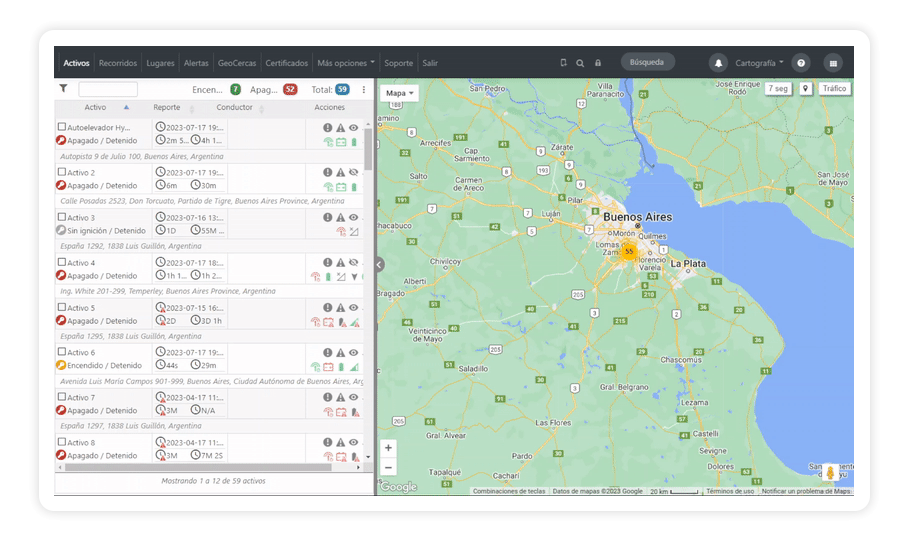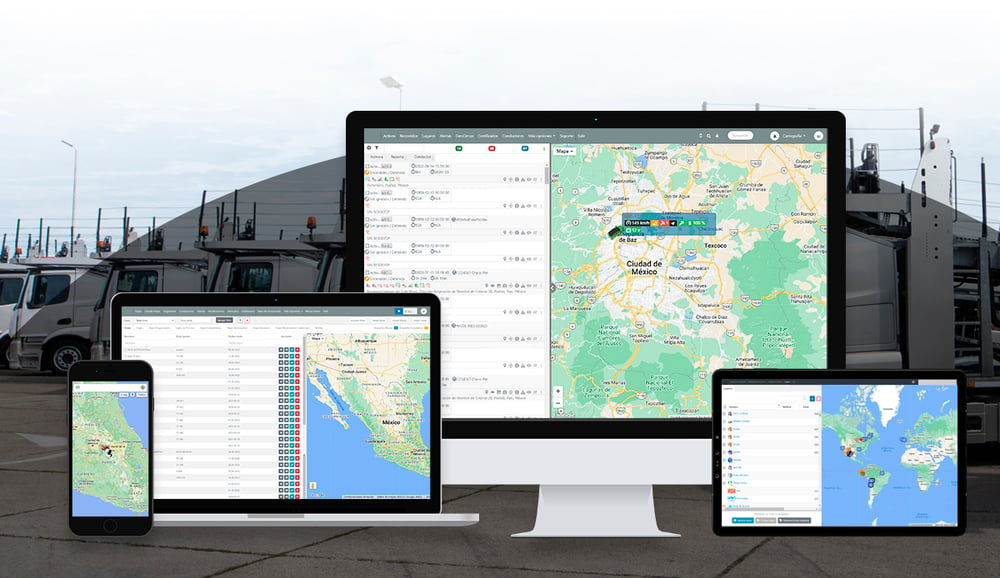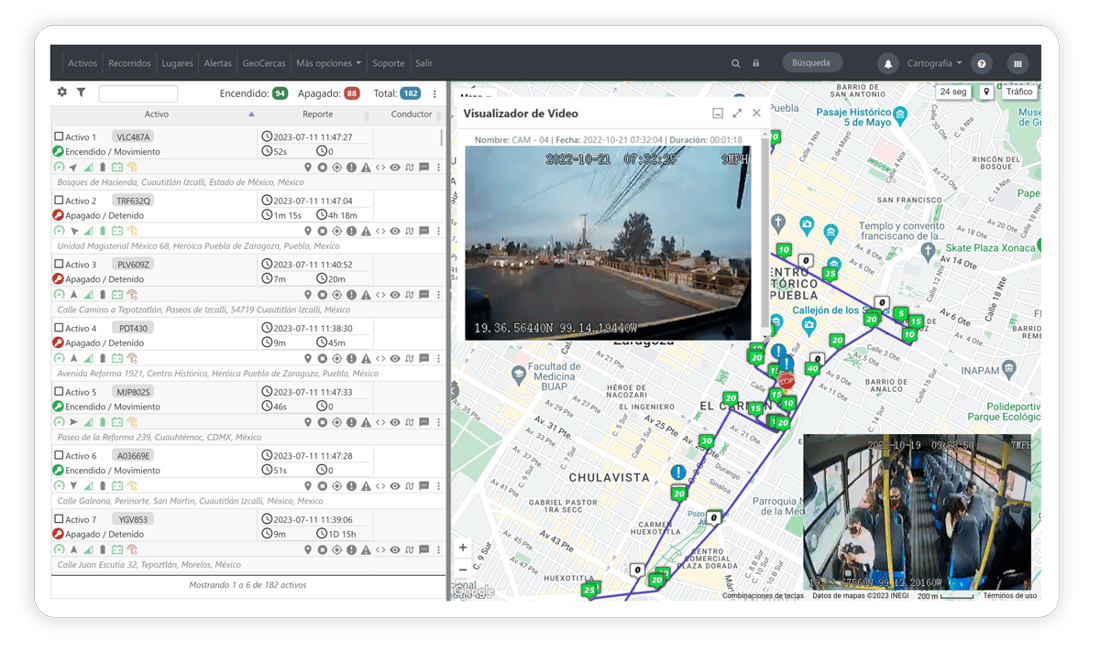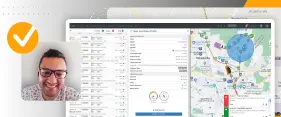What is a Robust GPS Tracking Platform?
A platform is the core component that supports the GPS tracking industry. Over the years, new trends and solutions have emerged in the industry, so it's common for many platforms that don't update to have limitations. These limitations can be related to the limited solutions they offer, service interruptions, lack of security, and much more.
A robust platform is one that has a wide range of features that make it competitive. It is also one that strives to innovate and continuously improve. It should be capable of providing solutions to tracking companies that adapt to their needs and projects.
There are tracking companies that have been in the business for a long time, and their platform has never presented limitations before, whether it's a third-party platform or an in-house development. However, they may notice a decrease in their customer acquisition and retention rates, and they're not exactly sure of the cause. If this is your case, one of the critical questions to ask is: Do I have a GPS tracking platform that meets my customers' needs?
It's not uncommon for GPS tracking companies to think that the platform they use is the best because they have been using it for a long time without major issues. However, it's important to consider that technology advances rapidly, and sooner or later, it will become limited compared to the competition if it lacks necessary updates. It's no longer enough to offer GPS tracking; now, companies must provide added value and more tailored solutions to their customers to help them grow and evolve.
In this article, we'll explain some fundamental points that make up a robust and competitive platform, allowing you to complete the template provided at the end. This template will help you evaluate if your GPS tracking platform meets the standards of the most comprehensive platforms available today and is prepared for the future growth of your company.
What Features Should a Robust and Competitive GPS Tracking Platform Have?
We have identified some features that will be useful for assessing whether the platform you use allows you to reach your full potential. They will also help you when choosing a tracking platform. With this information, you can complete the Platform Evaluation Template at the end of this article, which can serve as your guide.
- Tracking Accuracy: The platform should provide precise and reliable real-time location data. This is essential for delivering tracking services. In addition to this, many customers appreciate other value-added features, such as accurate premium mapping with Street View, high-quality geocoding that allows identifying the location's street and height, and kilometer point on the main regional routes where you operate.
- Stability: In 2023, it's essential to have a Service Level Agreement (SLA) by contract, which means your platform provider guarantees service availability, so you can offer it to your customers with confidence in minimal or almost no service disruption. The platform should have infrastructure that provides redundancy to ensure this stability. The SLA for a robust GPS tracking platform should not be less than 99% per year.
- Scalability and Performance: A robust platform should be able to manage large volumes of assets simultaneously and do so efficiently. User experience and response time should be in line with expectations. It should be scalable to accommodate fleet growth and allow efficient management of multiple customers and users, providing tools that help your operators save time.

- Intuitive and User-Friendly Interface: The platform should have an intuitive interface that enables optimal user experience. Users constantly seek to optimize their time and operate the platform easily and quickly.
- Specialized Features and Solutions: The platform should offer a wide range of functionalities covering niche needs of your customers, such as logistics (last-mile solutions, route planning), security (monitoring center modules for security-focused asset protection), fleet productivity (driver behavior, reporting systems, productivity measurement), and fleet management (maintenance, documentation). Additionally, it should have administrative tools for your company to manage the service you provide to your customers.
- White Label: It should also offer the possibility to customize both the platform and applications with your tracking company's logo, colors, and domain, providing your brand identity. Some companies offer this feature but not in full, as some elements can't be personalized. White labeling provides added value that instills confidence in the service you provide to your customers.
- Developer API: A robust platform should have an API that allows your company to create its own developments according to your needs or those of your customers, or consume information generated from the platform to feed another system.

- Web Services Repeaters: The platform should be capable of data forwarding to other platforms via web service repeaters to public safety entities, industries like logistics, exportation, petrochemicals, construction machinery, among others. In case you don't have the web service your customer needs, you should have the capability to create it.
- Security: Security is fundamental in a GPS tracking platform. It should have current security measures to protect access to the platform, such as security certificates and two-step authentication mechanisms. Additionally, it should ensure constant information safeguarding in case of an eventful failure. Having auditing modules to detect operator or client modifications in configurations is crucial. We recommend that your platform be hosted in data centers that meet SOC or ISO-type certifications.
- Historical Data Storage Time: The time for storing asset data is crucial when you need to access information for authorities or clients when required. A robust platform should have at least one year of data history with the option to expand it according to fleet needs.
- Multi-Device Access: The platform should be accessible from various devices, including desktop computers, mobile devices, and tablets. This allows users to access and manage the platform from anywhere and at any time.

- Reports and Analysis: A robust platform should provide detailed reports and analysis tools to evaluate fleet performance and operational efficiency. This includes information on security matters, fleet productivity, logistics, and fleet management. It should also be able to manage all this information and present it graphically for better comprehension. A flexible reporting system is one of the factors to consider when assessing your platform's robustness.
- Regular Releases and Updates: It's advisable for your platform to provide continuous improvements; without updates, you risk being unable to participate in new projects or encounter problems with certain GPS devices, sensors, accessories, and more at some point. In the GPS tracking business, staying up to date is crucial.
- Support for Multiple GPS and MDVR Devices: The number of certified devices is essential for considering a platform as robust. This assures you that if you need to use new equipment, they will already be available on the platform. This reduces integration time and costs as they are already certified.

- Integration of New Technologies: In the event of a project that requires a specific device, having a platform that allows device integration like GPS devices, MDVR, IoT devices, or accessories can be the difference between project success and failure. A robust platform prevents you from missing business opportunities because your platform provider lacks fast integrations. The time it takes to integrate a device, from the start and with the corresponding documentation, should not exceed two weeks.
- Mobile App and Notifications: A robust platform should have a mobile application for the platform operator to quickly access and operate it from a smartphone. If it doesn't have one, it should at least offer integration with messaging services (like WhatsApp or Telegram) for receiving alerts through these means.
- Video Telematics: Video telematics is an increasingly popular trend, and a comprehensive platform should offer solutions related to this. Many fleets are interested in knowing what happens both inside and outside their assets in real time, or having ADAS/DSM assistance. A robust platform should have advanced video telemetry features integrated with dashcams and MDVRs to meet the needs of various types of fleets.

- CANBus/OBD Module Reading: A robust platform should support devices that transmit information from CANBus and OBD modules to allow the reception of information from a vehicle's electronic components and sensors. This type of reading will enable you to identify vehicle fault codes, as well as throttle pressure sensors, battery level, etc.
- Focus on Your Region's Needs: Every country and region faces different situations, and a platform should address the specific needs of asset fleets in its location. For example, a robust GPS tracking platform in Latin America should have tools to address issues like security, productivity, asset management, among others.
- SMS/GPRS Command Sending: A robust platform should offer the possibility to send these commands to establish bidirectional communication between the platform and GPS devices. These commands allow various actions, such as requesting the current device's position, activating or deactivating functions, configuring parameters, and more. This allows sending commands to GPS devices in order to programm them to avoid human errors and save time compared to manual configuration.
- Sensor Support: A robust platform should have support for unlimited sensors. It should also allow the creation of sensors autonomously and the configuration of measurement units so you can monitor what you need. Moreover, it's important that the platform clearly and accessibly represents sensor data on assets.
These are some of the features that make a GPS tracking platform considered robust and competitive today.
Evaluate Your Platform
Based on what you've read, would you like to know the state of your platform and evaluate it? You can do it with the following template.
We hope it helps you estimate if the platform you are using is the best long-term option for your company, and you can make the best decision for you and your clients.
Click the button below to download the GPS Tracking Platform Evaluation Template, we hope it's useful for your business.
Also of Interest

|
|














